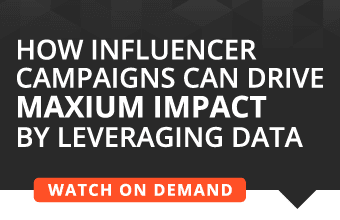Despite the importance, attention and commitments of businesses, DEI remains a visible problem in virtually every industry, and influencer marketing is no exception. New research from MSL U.S. puts a spotlight on the problem by identifying critical moments, milestones and barriers in a diverse creator’s professional trajectory—revealing an industry with a significant DEI disconnect.
In particular, BIPOC creators experience the most notable hurdles entering the field
While 73 percent of white influencers will have landed their first paid engagement within a year, just 46 percent of talent made up Black, indigenous, and people of color will reach the same milestone—a delay that ultimately impedes their long-term success.
“With these new data, best practices for benchmarking and commitments, MSL is continuing critical work to improve DEI in the influencer marketing space at a time when creators are continuing to evolve the professional community,” said Diana Littman, MSL U.S. CEO, in a news release. “We encourage the industry to move from advocacy to action and applaud those in our industry who are driving awareness and change around this important issue.”
Key takeaways from the research include:
A new world: Creators wield unprecedented influence with Gen Z
The firm’s latest consumer pulse survey found Gen Z is nearly twice (43 percent) as likely to be influenced by social media influencers compared to previous generations of Americans (22 percent), with Americans aged 45+ most influenced by experts (70 percent) and journalists (59 percent). With Gen Z emerging as the world’s most powerful and diverse consumer by 2026, achieving equity for diverse creators in influencer marketing is a moral and business imperative.
“While there has been some debate around the future of the creator economy and how much influence they actually wield, the bottom line is that Gen Z is unpersuaded by standard marketing and demand a high degree of engagement—which means influencers, especially with lower follower count, hold an outsized value,” said Shreya Mukherjee, MSL U.S. chief strategy officer, in the release. “Our pulse check gave us a clear signal of exactly that. Simply put, reaching this audience who are driven by values like authenticity and equity means unleashing a diverse team of influencers who don’t just look like them but share their mindset and values.”
The first year: a pivotal moment in a diverse creator’s journey
Diverse creators must work harder and smarter to succeed as a professional influencer or creator. MSL’s research pinpoints the first moment of pay disparity in a white vs. BIPOC influencer’s career—the very beginning. By the end of their first year in the influencer marketing industry, white influencers are nearly twice as likely (73 percent) to get a sponsored brand deal than BIPOC influencers (46 percent).
Additional findings on barriers to entry and success creators face include:
- Compared to BIPOC influencers, white influencers are twice as likely to secure their first brand partnership in the first six months of influencer work—a critical milestone in a creator’s career (42 percent white vs 21 percent BIPOC).
- A strong majority of BIPOC influencers (81 percent) state they must work harder to be successful on social media compared to white influencers (70 percent).
- Perceptions of bias driven by a lack of transparency around platform algorithms are significant concerns. BIPOC influencers say that platform algorithms were the top barrier to their success (37 percent).
“The realities of pay inequity run much deeper than the amount written on a check to an influencer. As our data reveals, persistent undervaluing of the worth of BIPOC-created content can be masked by looking only at the dollar value of an influencer’s contract,” said Rob Davis, MSL U.S. chief digital innovation officer, in the release. “To reach true pay equity, it is incumbent upon brands and agencies to define the total value a creator brings before settling on pay rates. Hiring an influencer is not just about creating content; we are paying for their talent, their reach and the quality of the audience they have built.”
Lack of equitable pay: Black and BIPOC creators charge less for more
MSL’s latest data found Black and BIPOC creators often charge less per post, despite having a higher median number of followers across platforms. This suggests gaps in equity, fairness and transparency drive a systemic undervaluation of BIPOC influencers.
The findings also suggest Black and BIPOC influencers are held to a different standard than white influencers for less pay:
- When looking specifically at Instagram stories, Black influencers make 67 percent less than white influencers (White: $1,500; Black: $500).
- BIPOC creators report making up to 67 percent less per in-feed Instagram post. Additionally, BIPOC and Black creators charge 25 percent less for sponsored YouTube content compared to white creators.
- More than six in ten Black (65 percent) and BIPOC (64 percent) influencers feel unfairly impacted by a lack of transparency of influencer pay rates, and over half of BIPOC influencers feel unfairly treated by social media platforms (54 percent).
- Twice as many Black influencers say ethnicity negatively affected their pay compared to white influencers, and nearly a quarter (23 percent) of Black influencers say their ethnicity played a role in being offered a lower rate than expected, with only 12 percent of white influencers expressing the same sentiment.
Equity comes from looking at everything a creator brings to the table, and this latest data underscores the need for creator compensation to be calculated as a combination of multiple social media metrics, resonance and content quality. Hiring an influencer is not just about creating content. Brands are paying for talent, reach, quality, engagement and much more.
Steps toward equity
A recent study by The Myers Report finds nearly two thirds of respondents (61 percent) feel the media and advertising industry overall is doing its best to advance DEI, while only less than half of Black respondents shared the same sentiment2.
MSL is committed to driving change and taking actionable steps towards equity, ensuring everyone is moving from advocacy to action. The firm announced two actions it is taking as a follow up to its Time to Face the Influencer Pay Gap report, including publishing its own pay equity best practices.These latest steps include:
- Influencer equity best practices: As part of this data release, MSL has published its own guidelines and best practices, including its red flag system. By transparently sharing the agency’s own best practices, MSL encourages the adoption of these best practices across the industry as an important step to increasing discoverability for BIPOC creators and ultimately closing the influencer pay gap.
- Creator evaluator: In order to even the playing field, MSL will develop an algorithmic standard blending social media metrics (views, engagement, follower count, etc.) with categorical relevance (content type, brand category, exclusivity, boosting rights, etc.), which the agency will use when evaluating influencer pay. MSL will consult with industry leaders and allies driving work in this space, including those convened at MSL’s closed-door July 2022 influencer equity summit.
Additionally, MSL’s partnership with The Influencer League extends into 2023, including the creation and implementation of an industry-leading curriculum covering best practices, content creation, pricing and negotiation for creators.
MSL’s latest survey engaged influencers, brands and agency leaders in providing insights into experiences, challenges and practices related to diversity, inclusion and pay equity. MSL conducted comprehensive research from October 2022 to March 2023. The work encompasses a multi-platform research approach, including expert interviews; this primary research tapped into 550 U.S. influencers, review of the cultural, societal and influencer landscape; and distinct findings from MSL’s proprietary influencer marketing platform, Fluency. Influencers surveyed were asked to report their follower count engagement rate, views, pay rates, race and income from brands. Additionally, MSL and Reputation Leaders surveyed a nationally representative sample of 1,000+ consumers in the US about cultural and societal influencers.







